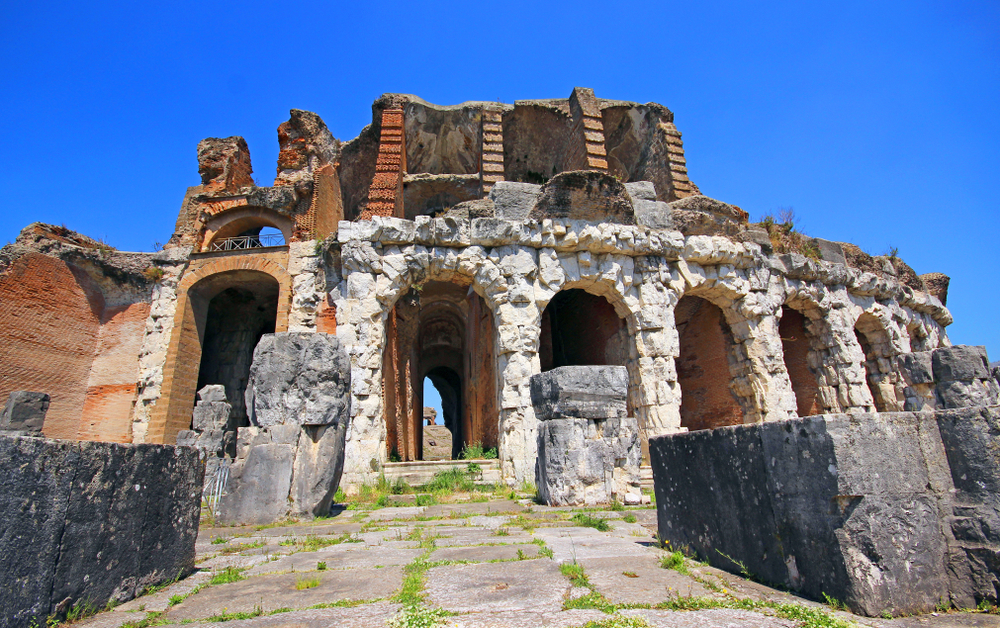“Those who are about to die, salute you!”
Whether or not this phrase was actually used by the ancient fighters, gladiator lore has long been intriguing to those who wish to visit Italy. You simply can’t miss a tour of the famous Colosseum in Rome, the largest and most well-known site of gladiatorial fights in the ancient Empire. When you’re imagining how to fight like a gladiator, you may have images of the chariot races in the film “Ben-Hur,” the showdown between Maximus and Emperor Commodus in “Gladiator”, or perhaps Audrey Hepburn & Gregory Peck visiting the Colosseum in “Roman Holiday” may come to mind. The word “gladiator” itself evokes excitement, strength, and an underlying brutality present in ancient Roman culture that manifested itself through the blood-lust of a crowd cheering on its warrior cult to achieve glory and renown through battle. But with so many stories & movies about gladiators, do you know the history behind gladiators battles?
The Real Deal Behind Gladiator Battles!
Gladiatorial fights are thought to be originated from ancient funeral rites, eventually becoming popular as a public spectacle. For over 600 years, gladiators of many different social classes and ethnic backgrounds fought for glory, fame, financial rewards, and often for their freedom. Gladiators came from all regions in the Empire with their weapons and armor often reflecting their regional roots.
THE DIFFERENT TYPES OF GLADIATORS
There are lots of different types of gladiators that fought in the ancient Roman battles in the Colosseum. However, there are only certain gladiators who would fight against each other. If you were a murmillo, you would carry a sword and shield, and wear a helmet with an image of an engraved fish. A murmillo typically fought against the retiarii, another gladiator who was armed with a trident, a dagger, and a net to ensnare his opponent, often reminding the audience of Neptune, the god of the sea. A murmillo could also be paired to fight against a Thracian, who carried a curved sword and a small shield. Other types of gladiators include the equites, who fought on horseback with a spear and a sword, and the essedari, who rode in chariots. The Hoplomachi, or Samnites, were gladiators whose dress, armor, and weapons mirrored that of a Greek hoplite, or common foot soldier. They carried a round shield that covered about half of the body and a long spear.

WHAT WERE GLADIATOR BATTLES REALLY LIKE?
In order to make the games interesting for the crowd, the organizer of the games rarely paired the same type of gladiator against each other. The goal was to make the fight exciting, shed some blood, and perhaps end in a gruesome death. Most battles did not end in death, however, as gladiators were considered professional fighters. Training and housing gladiators could be quite expensive, even though most were slaves. Historians estimate that about 100 schools existed throughout the Empire. If you are very interested in gladiators, you could pay a visit to the remains of the gladiator school in Capua. It was the school from which the famous gladiator Spartacus escaped with nearly 80 other fighters, starting a slave rebellion that lasted four years.

WOMEN GLADIATORS
But men weren’t the only ones who got to compete, there were women gladiators as well. They were either paired against another woman, or in the time of Emperor Domitian, against a dwarf. However, female gladiators did not hold the same prestige and social standing that a battle-tested male gladiator held in the Roman eye. Despite this, archaeologists have unearthed sculptures of female gladiators; one resides at the Museum für Kunst und Gewerbein and another at the British Museum. Some first-hand accounts of female gladiators have also been found among the writings of ancient Roman historians.
Wherever you go in Italy, you are sure to discover traces of this ancient league of warriors – good luck as you choose your armor and enter the arena! We salute you!
Colosseum Underground Tour with Arena, Palatine Hill & Roman Forum
Varies 3 hrs



The description of the perfume using the scene in gladiator puts me right there. I live in Oregon and I have watched gladiator many times. I have never been to Tuscany but I have enjoyed the scent of a wheat field.